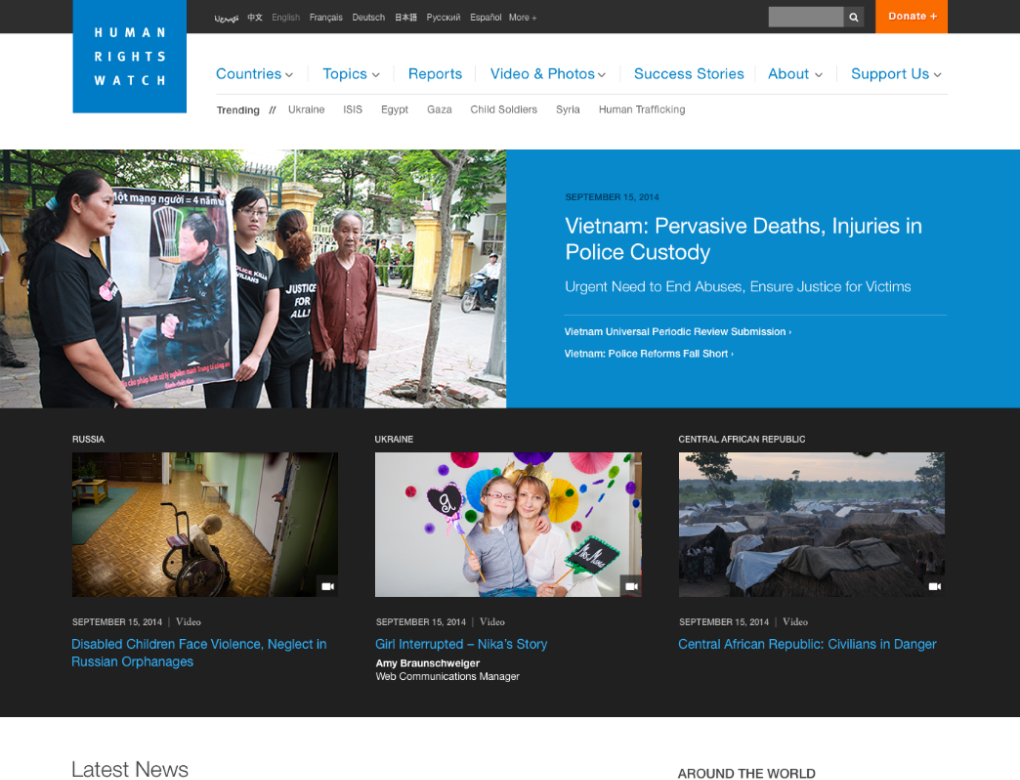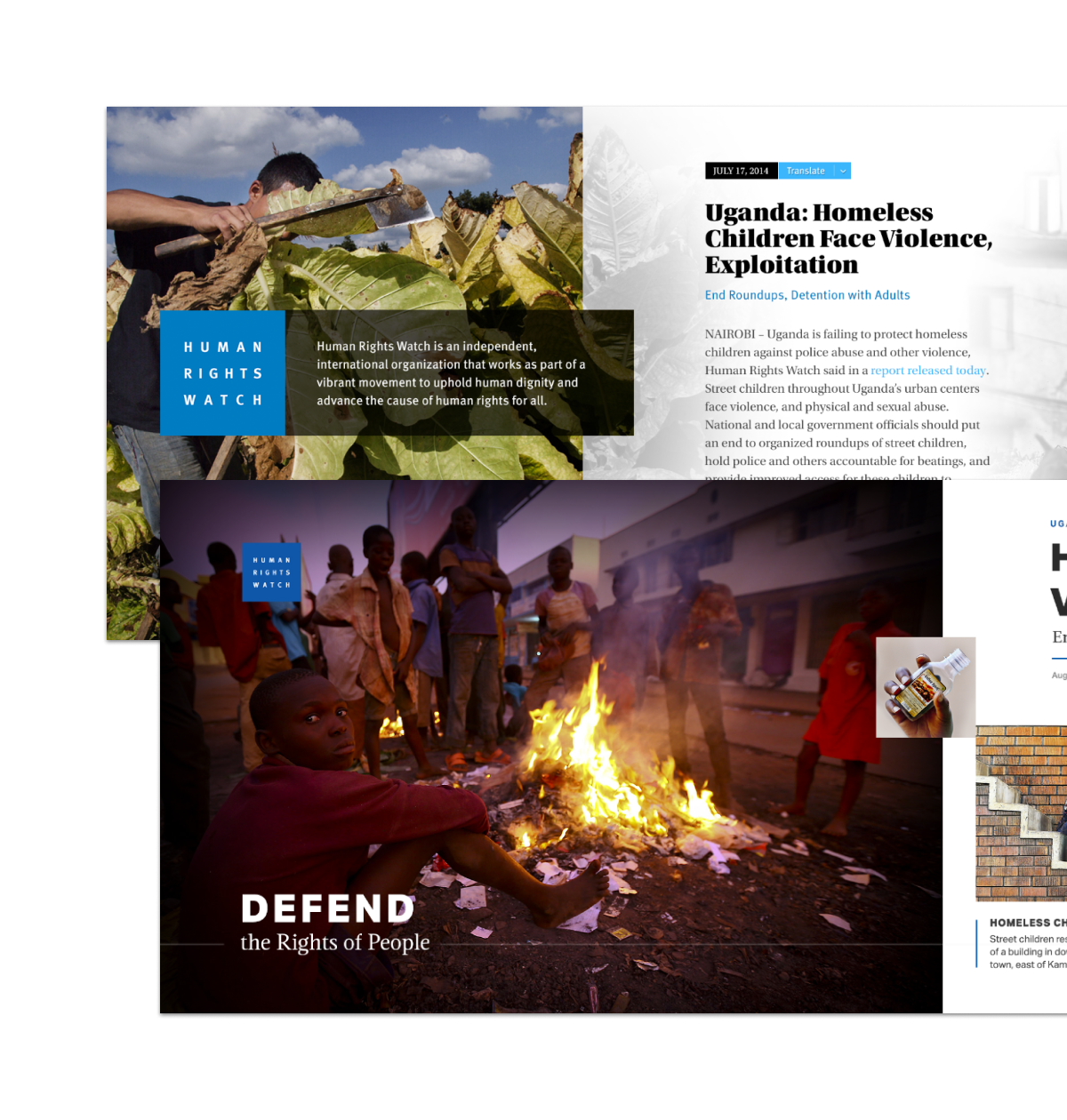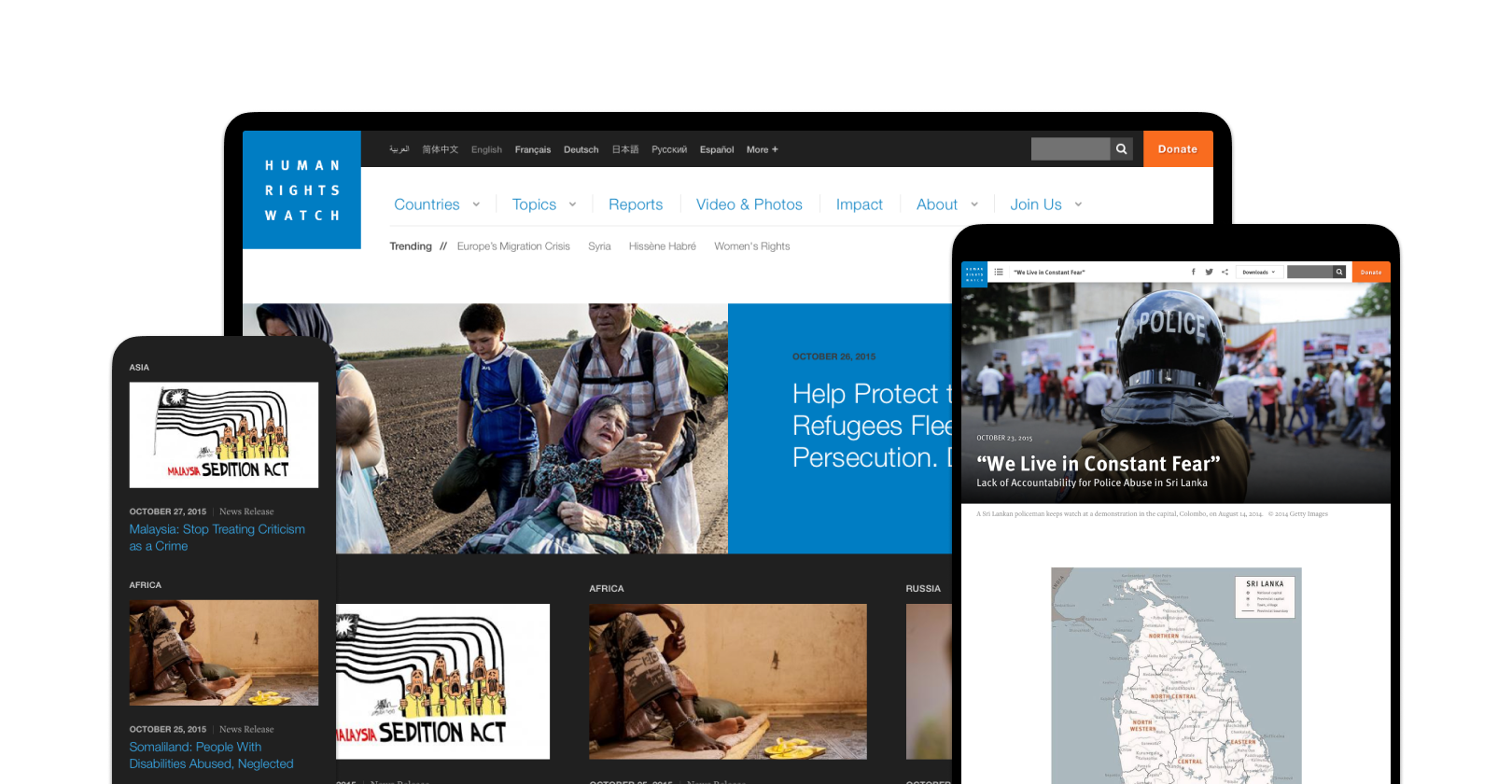Human Rights Watch


Human Rights Watch defends the rights of people everywhere.
Established in 1978, its in-depth reports and analysis have long been an essential resource for journalists, policymakers and activists worldwide.
In mid-2014 Human Rights Watch was seeking help with an important transition. It had been through several major iterations of its web presence over the years, but had seen much of that work as complementary to print. More recently, the organization had begun a major shift toward a digital-first publishing strategy. The need for timely content to help shape global public debates as they were actually happening was bigger than ever. Equally important, Human Rights Watch was directly experiencing the explosion of modern devices as its audience was increasingly mobile.
We worked with Human Rights Watch to create a beautiful, user-centered digital experience that delivers impact without sacrificing readability–on all modern devices. We built authoring tools that facilitate timely publishing and delivered a platform that is both flexible and powerful.
Discovery
Aligning unique stakeholder needs from a large, diverse team with overarching goals for its digital presence was a key concern early in the project. We began the discovery process by surveying stakeholders and users, then ran multi-day, in-person workshops at Human Rights Watch’s Manhattan, NY offices to collaboratively process the information we had gathered. We heard the distinct perspectives of everyone in the organization’s broad stakeholder group and organized internal goals to align with the needs of HRW.org users.

User-Centered Design
From day one we talked user-centered design, advocating an approach that would keep users at the center of the process. Together we created a strategy for reaching HRW.org’s primary audience of journalists and policymakers, identifying key personas and mapping user stories critical for delivering on goals. Personas provided a clear framework for guiding design decisions and building consensus among stakeholders.
My team loved the creative interaction with Aten. They brought a lot of energy and ideas to the process of developing the look and navigation for the new site and were very helpful in guiding my organization towards alignment around our end goals. We appreciated the rapid-response, deep engagement of the design process and are very happy with the end result.
Readable and Shareable
Given the critical role of in-depth reports for delivering on Human Rights Watch’s mission, readability was a huge focus for the project. We designed simple, effective interfaces for exploring articles by country and topic, and surfacing related and trending content. In-page navigation helps users move efficiently through lengthy reports. Social optimizations like sharing tools and promoting most-shared content directly empower users to amplify Human Rights Watch’s reach.

Responsive
With mobile users being a large and growing segment of HRW.org traffic, desiging for the full breadth of modern devices was critical. The experience couldn’t simply work on mobile; it had to be compelling and readable. Interface elements adjust gracefully for smaller devices. Navigation slides quickly away when not needed. The design is as friendly for touch and swipe as it is for click and scroll.
Multilingual Drupal
HRW.org supports multiple tiers of translation and localization. The website is published entirely in eight languages, and its design beautifully accommodates a broad range of character sets including Chinese and right-to-left languages like Arabic. The platform also supports one-off translation and features articles and reports in nearly fifty languages altogether.


Focus on Publishing
In addition to HRW.org’s external audience, we prioritized its authors and publishers as important internal users. We helped create a consistent, unified approach to content management for roughly twenty unique content types – including video and other media – that allows authors to create once and publish everywhere (COPE). Read more about the Publishing Experience for HRW.org.
Automated Migration
One of the most complex development tasks of the project was writing automated migrations to move tens of thousands of distinct pieces of content, published in dozens of languages, from a legacy content structure into the new platform. Source data included more than twenty unique content types as well as videos and photos from a completely separate system.
DevOps
The new HRW.org had to be fast. Built in Drupal 7 and hosted on Pantheon, the platform leverages multiple layers of caching–from Drupal’s core application-level cache, to Redis, to a distributed global CDN. Pages load in under a second for most connections.
Moving Forward
Our work with Human Rights Watch continues as we collaborate to make strategic enhancements and build new features. We are thrilled to have played a role in the project and look forward to ongoing support and development of the platform.
